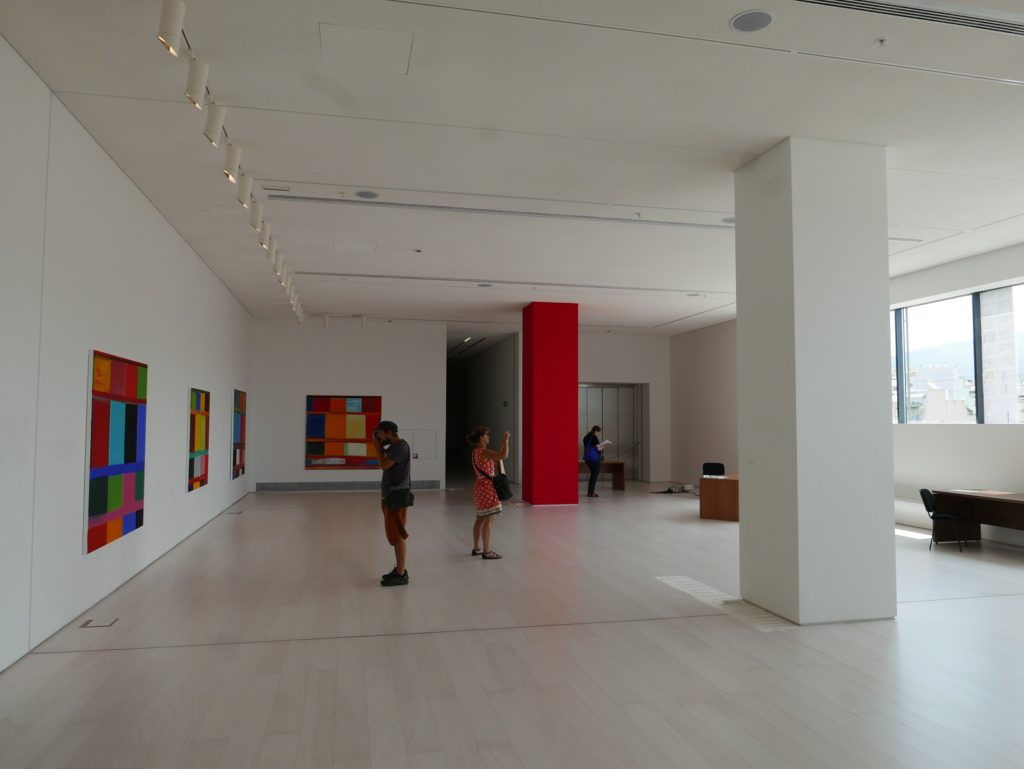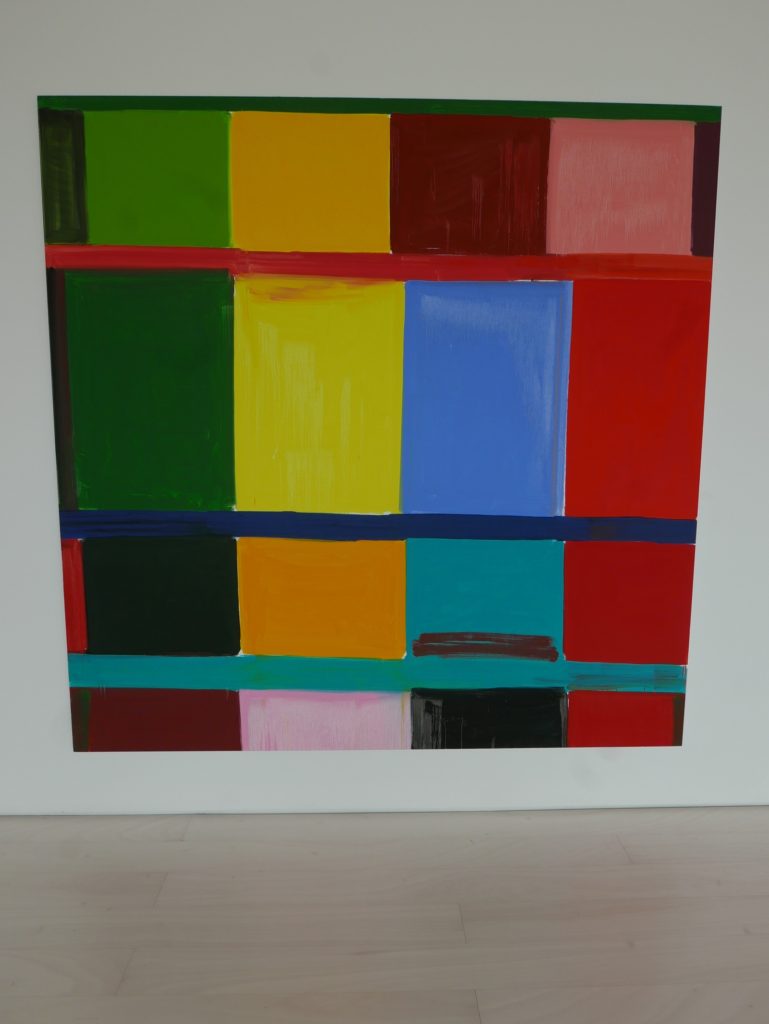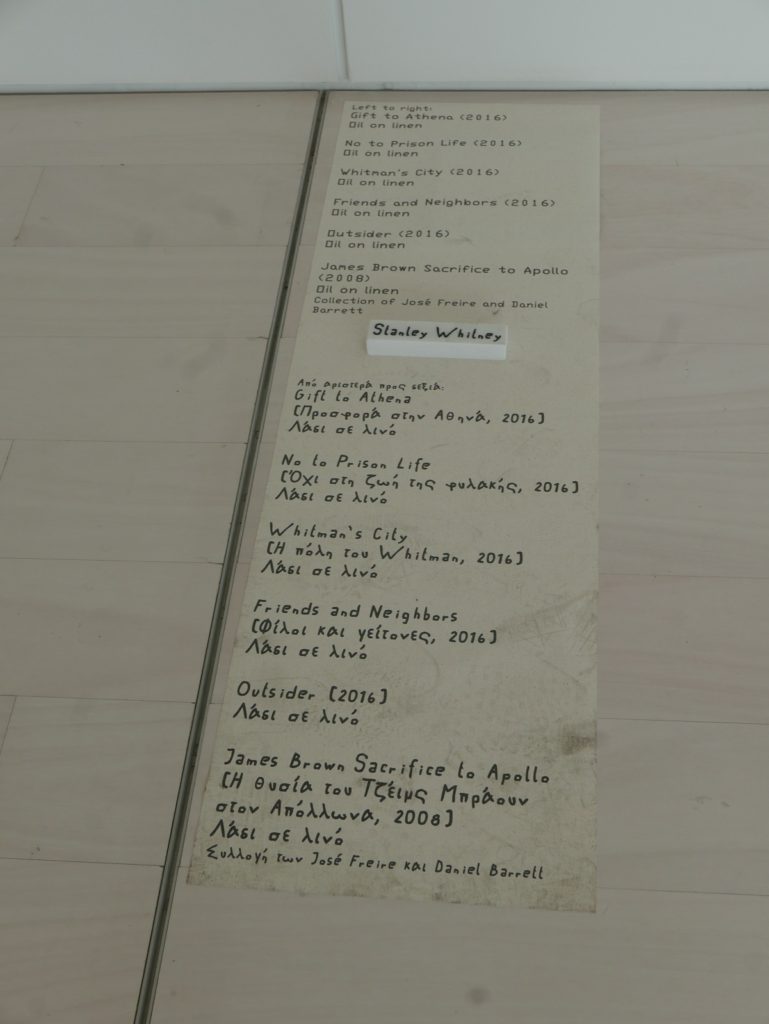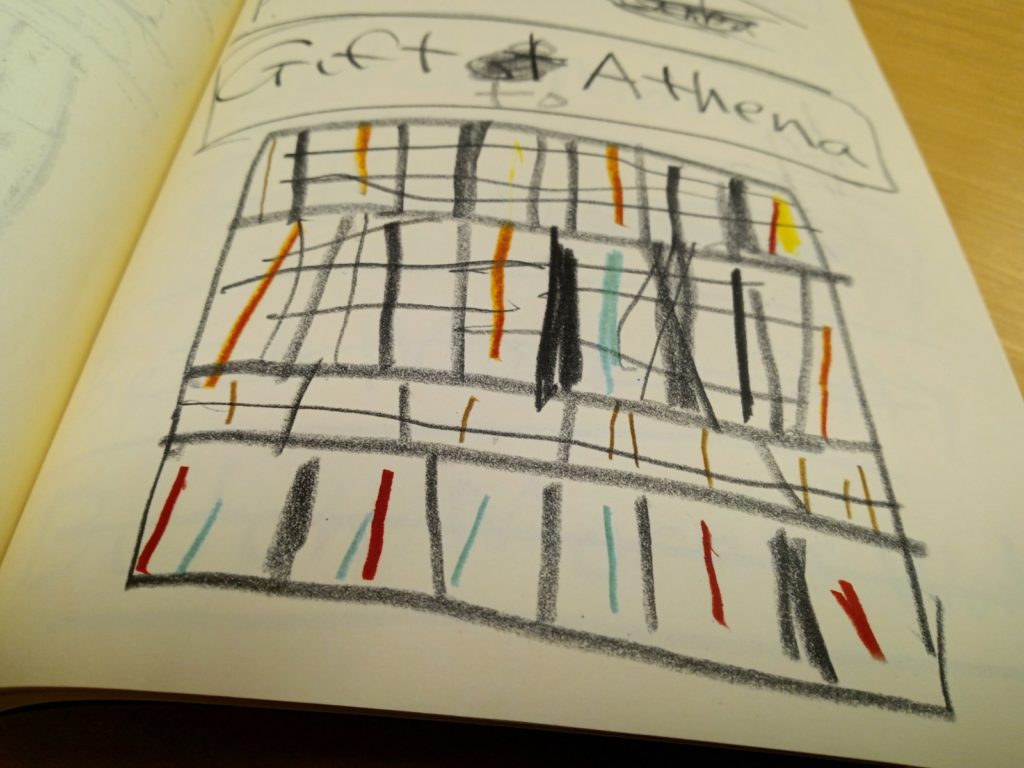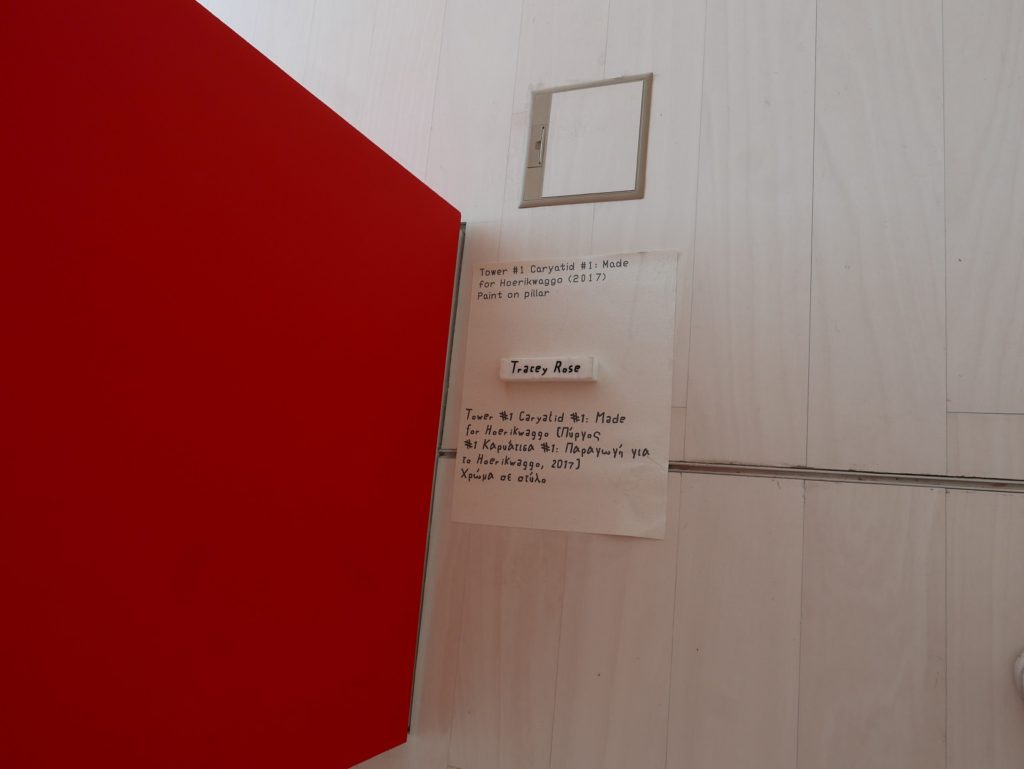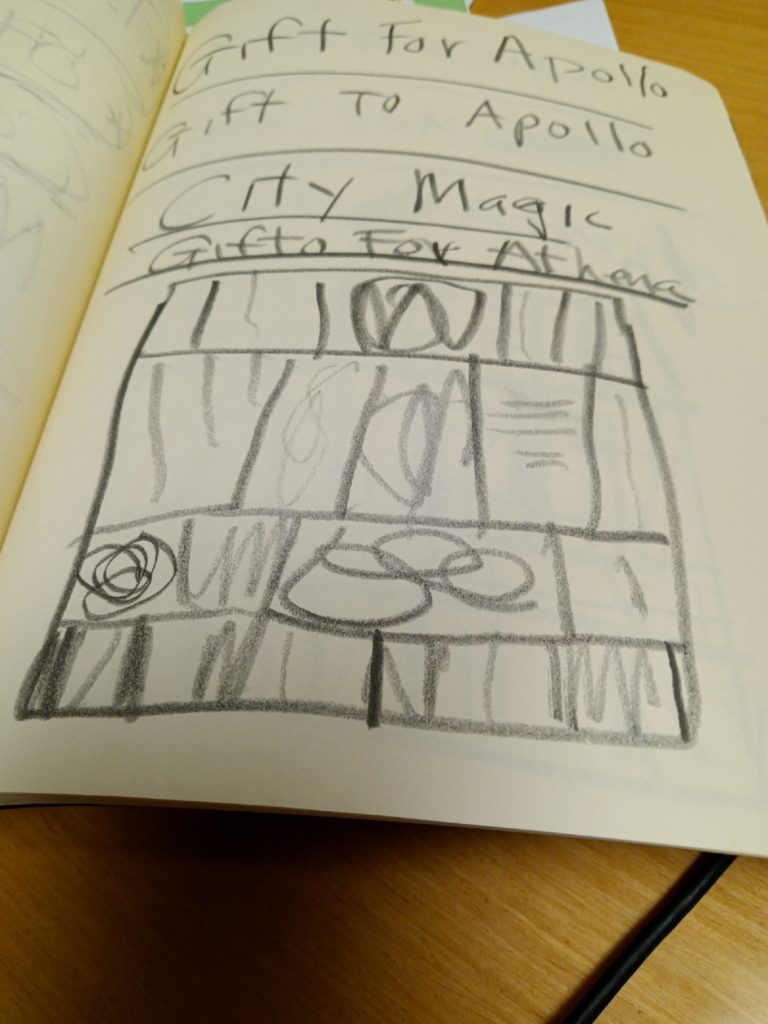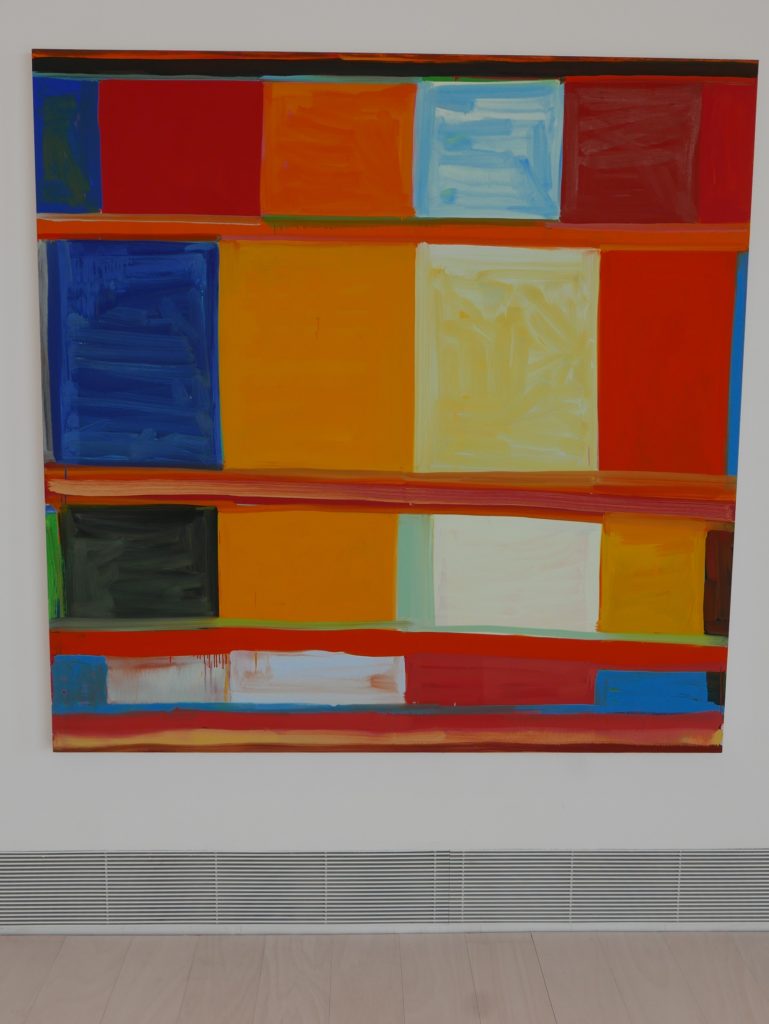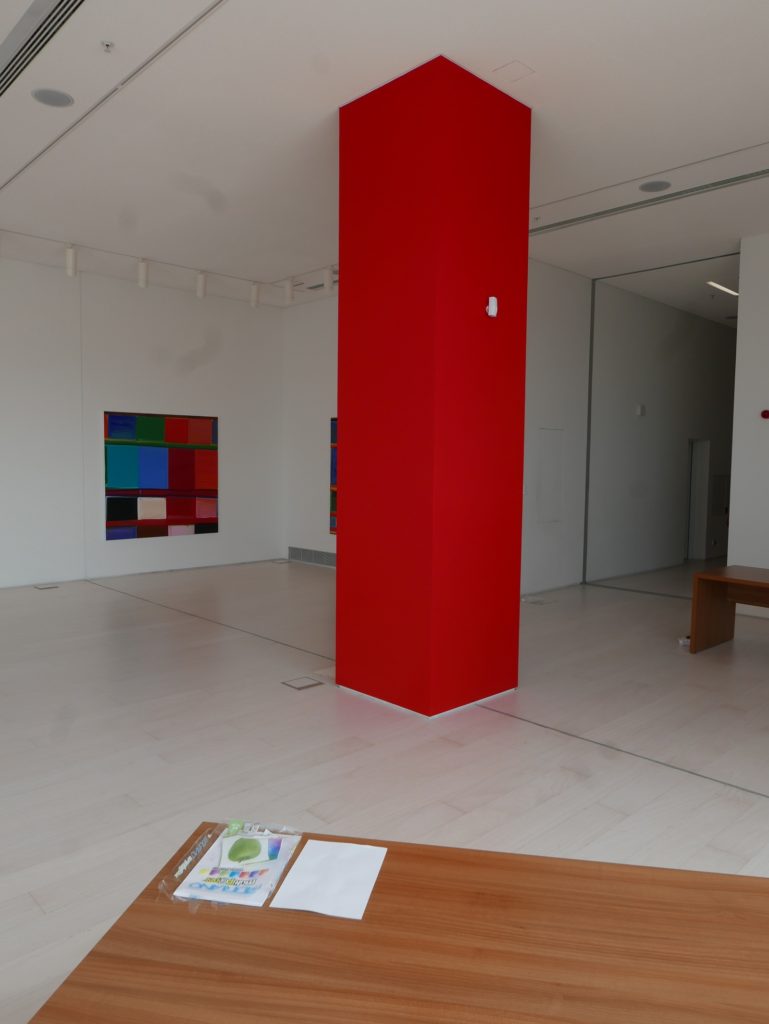Yes, I’m back and I come bearing a story.
He, my librarian (who, to be clear, is definitely not the hero here), was in Athens, at his second day at documenta 14. He is at EMST, in the gallery shared by the colorful grid paintings of Stanley Whitney and the reddened column of Tracey Rose (as well as one of Pope. L’s whispers and the overturned tables and projection of the duo Marie Cool Fabio Balducci).
He is looking at Whitney’s Gift to Athena and thanks to Rose’s red column, he is focusing on the block of red to its right side. He will later look for this column in Whitney’s sketchbook in his library, to no avail.
He is struck (and continues to be struck) by the title of Rose’s work: Tower #1 Caryatid #1 Made For Hoerikwaggo (2017).
Later he will talk to Rose about the work and learn about its secrets (I can whisper it here – it takes the form of a bloody sword through the Eurocentric museum and its originary claims to knowledge), through further research, learn about the origin story of Hoerikawaggo through the intervention of the goddess Djobela.
Hoerikwaggo is a Xhosan name given to Table Mountain by the nomadic Khoi people who hunted and gathered on these mountains before white settlers landed at the Cape. According to the Xhosa creation myth, the Sun God Tixo and the Earth Goddess Djobela conceived Qamata. Qamata created the world by forming dry land over the oceans. Nganyamba, the Great Dragon of the Sea became jealous over this land, and fought with Qamata to prevent its creation. During their ensuing fight, Qamata was crippled. Because of his injuries, Qamata couldn’t protect his created land from the jealous wrath of Nganyamba. His mother, Djobela, aided him by creating four gigantic beings to guard and protect each corner of the earth: north, south, east and west. The Goddess placed the biggest and strongest of the giants – Umlindi Wemingizimu – at the gateway to the south where Cape Town now lies.
Years later, sitting in his campus office (the first time this year), he rewatches Rose in conversation with Koyo Kouoh and hears’ the artist say:
One of the many kinds of theories I have been looking at though for the past while – it kind of just found me – I was talking to a friend who is a healer and she was saying that there was an imbalance that has to be rectified – an imbalance between the divine masculine and the divine feminine. From an African perspective, going back past ancient [inaudible] to a space where women were divine, but they were overthrown by the priest class, and that is where the vilification of the female starts. They [the priests] start to take over the sacred space of creation – the magical space – asserting the authority of a god and of order. This is the theory that makes the most sense to me on bad days.
Turning back to Whitney’s paintings he now wonders what stories are hidden there, in the colors, between the lines?

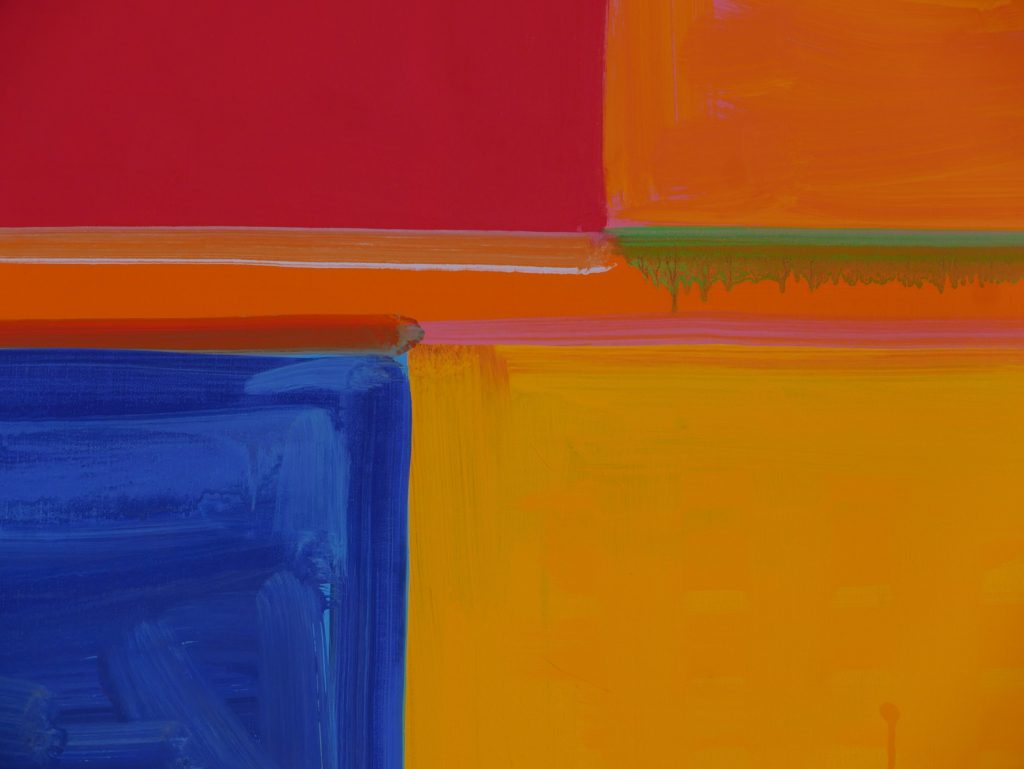

Turnint back to Whitney’s sketchbook, the list of titles with Apollo makes him look again at James Brown Sacrifices to Apollo (2008) and he wonders what it could have to say to his Gift to Athena (2016)?
What kind of gift could it now be in light of what Rose’s work, made for Hoerikwaggo and the goddess who made it?
